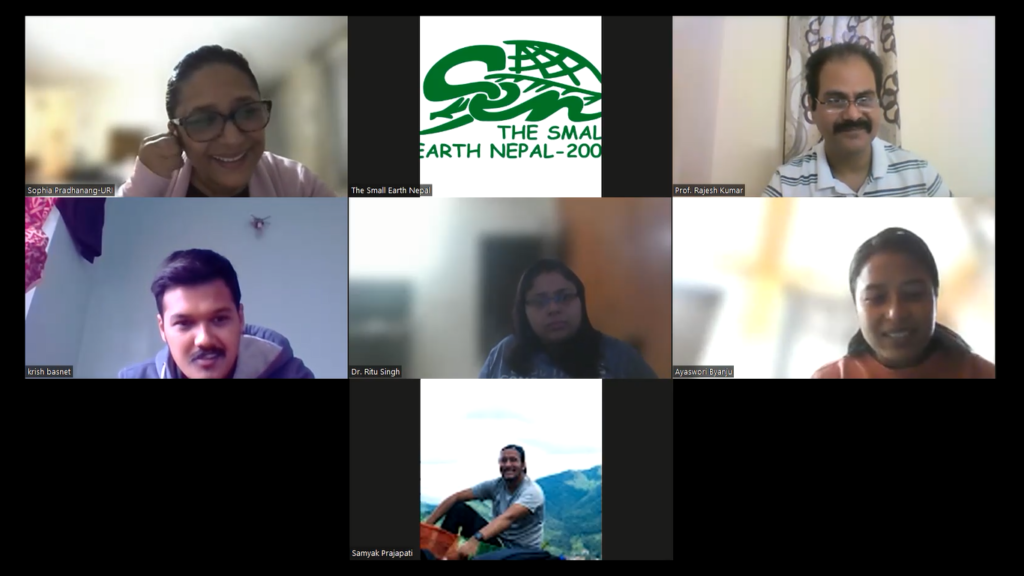Under the project “Floating Treatment Wetland System (FTWS) – sustainable green technology to remediate the polluted surface water bodies ”, funded by the Asia Pacific Network for Global Change Research (APN) and implemented by The Small Earth Nepal (SEN) in collaboration with Central Department of Hydrology and Meteorology (CDHM), Tribhuvan University (TU), Nepal; Center of Research for Environment, Energy and Water (CREEW), Nepal; Central University of Rajasthan (CURAJ), India; University of Dhaka (UD), Bangladesh; Kathmandu Valley Water Supply Management Board (KVWSMB), Nepal; Tribhuvan University (TU), Nepal; University of Rhode Island (URI), United States and University of Yamanashi (UY), Japan conducted an online training on FTWS Raft construction on 12 November 2022. The training was provided/moderated by Dr. Soni Pradhanang (Associate Professor, URI). The purpose of the training was to develop the capacity of the participating institutions on FTWS raft construction and apply them in the field as part of their research work in the project.
Total of seven individuals representing two collaborating institutions from Nepal and India took part in the training. The basic design of the raft used by Dr. Pradhanang was a 7×10 feet raft for her field testing. The raft used 2-3 inch layers of Styrofoam sandwiched between bamboo mat layers and enclosed by a steel cage for structural support. The bamboo mat, despite being degradable, was used as a replacement for plastic bottles to eliminate micro-plastic emissions. The raft is anchored by a 20 kg concrete block in a way that it had a certain degree of free float but couldn’t drift away with wind or tide. The plants were spaced at a 6-inch distance from the edge planting hole in the foam.
Dr. Pradhanang recommended using 4 rafts of 7 feet ✕ 10 feet or 6 rafts of 5 feet ✕ 8 feet, per corner/point of the test area to cover at least 5% of the test area. She suggested using polyethylene foam as a replacement for styrofoam in case of availability issues. The anchor could be steel rebars or concrete blocks depending on the availability. A new layer could overlay the bamboo mat layers as degradation occurs.
From the training, participants of the project team learned to prepare FTWS rafts for field application in their respective project sites.

FTWS Raft Designs




